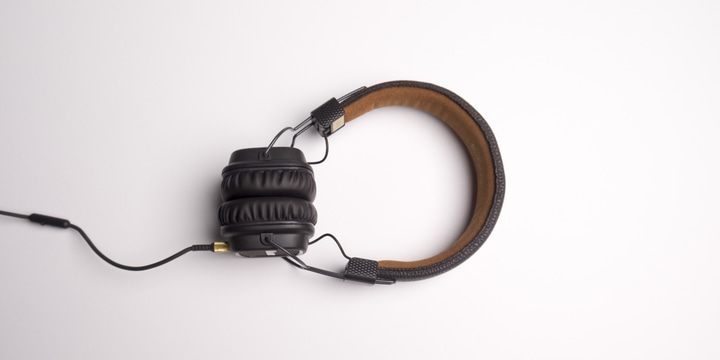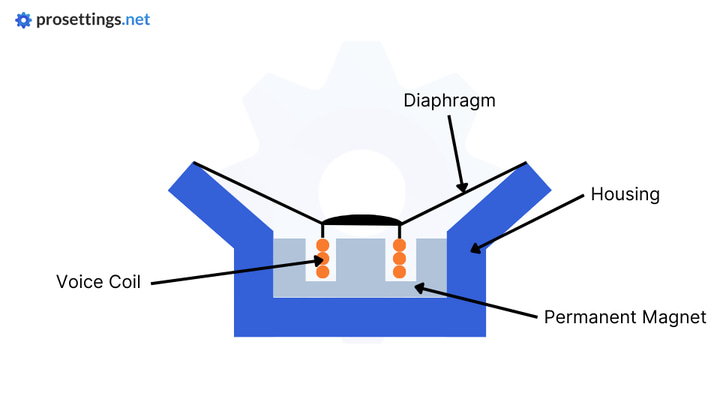How Do Dynamic Headphone Drivers Work?

Headphones (and gaming headsets) come in a ton of different shapes, sizes, and configurations. They can be bought for the price of a McDonald’s Happy Meal and on the other end of the spectrum you’ll find headphones that cost as much as a brand new mid tier car, so it’s understandable that people who aren’t all that into headphones/audio can get confused when it comes to purchasing a new set of ‘cans’, as they are often called.
The world of audio technology is a confusing one, so in this article we’ll go over how dynamic drivers work.
This article is part of our series on headphones and headphone drivers. You can always check out our overarching article on headphone drivers in case you’re interested.
What are Dynamic Drivers?
In order to know how a headphone driver works, it’s important to know that ‘sound’ is made up out of sound waves. These waves travel through a medium (in the case of audio, this medium is air) and are then received by our ears and perceived as sound by our brain. This is of course a very simplified explanation, but in essence a headphone driver needs to make sure that the molecules around it start moving and reach the intended listener. In short: a headphone driver is responsible for creating the sound that comes out of your headphones.
A dynamic driver is made up out of three main parts:
- A magnet
- A voice coil (a coil of, generally, copper wire that’s in contact with the diaphragm)
- A diaphragm (a thin membrane)
In a dynamic driver, the voice coil sits inside a magnet with an always present magnetic field, and when an electrical signal (audio sources transmit audio via electrical signals) is applied to the coil it becomes electromagnetic. Because of this, a constant push/pull interaction between the coil and the magnets begins, causing the coil to start moving rapidly. Since the coil is connected to the diaphragm, this also causes the diaphragm to move, thus creating sound waves.
You can quite clearly see (the exterior part of) this mechanism at work in speakers that have no front grille. The cone-shaped elements that you can clearly see vibrating at higher volumes are drivers, and the thin vibrating portions are the diaphragms.

Dynamic Drivers – Pros and Cons
Dynamic drivers are by far the most used drivers in headphones due to how cheap they are to produce (at a basic level, at least) and their relatively low power draw, meaning that you don’t need an external amplifier to drive an average dynamic driver. They are known for their excellent bass response and wide dynamic range, meaning that they are ideal for a large range of musical genres and that manufacturers don’t need to use a ton of drivers in order to make a pair of headphones sound good.
Due to their affordability and ease of use they are used in a ton of entry-level headphones, but that doesn’t mean that dynamic drivers can’t live up to the expectations of experienced audiophiles. They come in all sorts of configurations, ranging from extremely basic drivers with affordable components to top tier drivers with a ton of engineering behind them, and material choices are a key element to how a dynamic driver sounds.
Generally speaking, dynamic drivers are susceptible to distort at higher volumes or when having to produce a lot of low frequency sounds. That’s because the diaphragm gets moved physically by components that are attached to it, so other parts of the drivers might experience secondary vibrations or even come into contact with the moving parts at higher volumes. In common dynamic drivers, the diaphragm is also made out of a cheaper, rather bendable material, which can transform and disfigure when vibrating quickly, and that also causes the sound waves to distort.
In a perfect world, a diaphragm for a dynamic driver would weigh nothing yet be as rigid as possible, but there are of course laws of physics to abide by, meaning that a weightless and completely rigid diaphragm doesn’t exist. Manufacturers are always looking to create new materials to use as a diaphragm. The lighter and more rigid a diaphragm, the more accurate it’ll sound and the less prone it will be to distort.
Conclusion – Dynamic Headphone Drivers
Dynamic drivers are the bread and butter of the audio world, and they’re used in a ton of headphones, ranging from cheap sets that you get in a discounted gaming peripherals bundle to top end headphones. If you’ve used a headphone in your life, you’ve probably used a dynamic driver.


